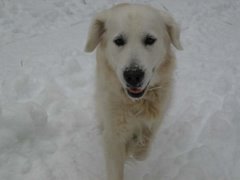
Science: Section 13: Training Principles and Methods
Learning Objectives for This Section
Definition of athletic training and its parameters
The F.I.T.T. principle (Frequency, Intensity, Time, and Type) of developing a training program
The role of cardiorespiratory fitness measurement in designing training schedules
The role of the three energy systems in training
The six Principles of training (Overload, Progression, Specificity, Individual Difference, Reversibility, and Diminishing Returns), and their integration into an individual training regimen
The general adaptation syndrome (GAS), and its role in athletic training
Environmental factors and their impact on training
Other important factors that can have an effect on training, such as rest, recovery, avoiding injury, maintaining interest, and avoiding burnout and/or overtraining.
Textbook pp. 187 - 198
§ F.I.T.T. principle
§ Measuring cardiorespiratory fitness
§ Repetition maximums
§ The role of energy systems in training
§ Other principles of training
§ Fartlek training
§ Interval training
§ Concurrent training
§ Plyometrics
§ Resistance training
§ Periodization
Select and record three sports on board (e.g., hockey, soccer, tennis) and determine which training method best serve the needs of athletes competing in each sport.
Workbook Exercise 13.3 pp. 135 - 136
History:
The class will study classical relief sculptures that tell stories of great battles and heroic deeds. You will create your own of either a contemporary or historical event.
Discuss relief sculpture, with references to Greek and Roman classical sculpture. Discuss a significant event you are studying in history or a current event you would like to depict in a relief.
You should describe the entire event from the beginning to the end, and describe key characters and background information. Based on the story the students chose have them sketch out their ideas. Distribute cardboard cut outs.
Number each one in sequence. You can then attach paper cut outs and draw their depiction of the story on their board. Make sure the boards will line up and that all the pictures are coming together ok. After the work has been completed connect all the pieces with tape or tinfoil or staples.
After this you can create a narrative of the event below the relief to describe in detail this event in the context of other events in history.

